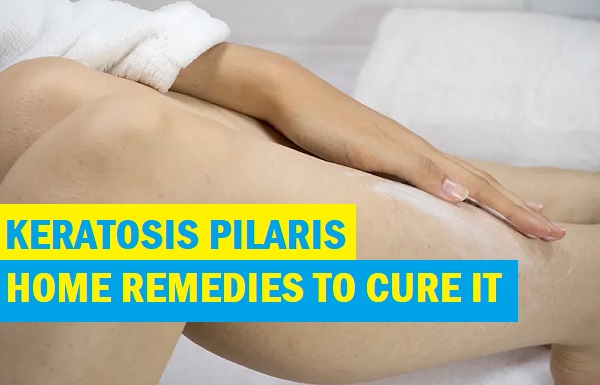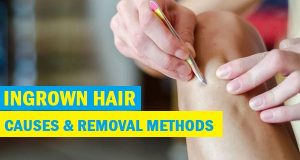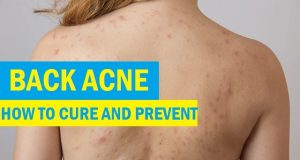
How To Treat Keratosis Pilaris at Home with Natural Remedies
Keratosis pilaris (KP) is a common skin condition that causes small, rough bumps to appear on the skin, often resembling chicken skin. While it’s not harmful, it can be bothersome and may affect one’s self-confidence, especially when it appears on visible areas like the arms, thighs, or face. If you’re looking for effective ways to manage keratosis pilaris in the comfort of your home, we’ve got you covered. In this article, we’ll explore several home remedies and tips to help you treat keratosis pilaris and achieve smoother, healthier skin.
What is Keratosis Pilaris?
Keratosis pilaris, commonly known as “chicken skin,” is a skin condition that causes small, rough bumps to appear on the skin, particularly on the arms, thighs, and face. While it’s not harmful, it can be bothersome and impact one’s self-confidence. Keratosis pilaris occurs when there is an excessive buildup of keratin, a protein that protects the skin from infections and other harmful elements. The buildup clogs the hair follicles, leading to the formation of small bumps on the skin’s surface. This keratosis pilaris condition is more common in individuals with dry skin and tends to worsen in dry, cold weather.
Home Remedies to Cure Keratosis Pilaris
If you’re seeking effective home remedies to manage keratosis pilaris, this article provides a comprehensive guide to help you achieve smoother and healthier skin.
1. Moisturize Regularly
In such condition, it is advisable by the dermatologists to keep the affected skin areas well-hydrated, to manage keratosis pilaris. Try those thick, emollient moisturizers that can help soften the bumps and prevent further dryness. Moisturize the skin at least twice a day, especially after bathing, to lock in moisture. Regularly applying a rich and non-comedogenic moisturizer can help soften the bumps and prevent further dryness. Choose a product that contains ingredients like glycerin, hyaluronic acid, or shea butter for maximum moisturizing benefits.
2. Exfoliate Gently
Regular exfoliation can help remove dead skin cells and unclog hair follicles. However, it’s essential to exfoliate gently to avoid irritating the skin further. Use a mild exfoliating scrub or a loofah and exfoliate the affected areas in a circular motion during your shower routine. Try the exfoliating scrub with ingredients like alpha hydroxy acids (AHAs) or use a loofah to exfoliate during your shower routine. It will certainly help with the keratosis pilaris.
3. Warm Baths with Epsom Salt
Taking warm baths with Epsom salt can help soothe the skin with keratosis pilaris and reduce inflammation. The salt’s magnesium content also aids in exfoliation. Add a cup of Epsom salt to your bathwater and soak for about 15 minutes. The magnesium in Epsom salt helps exfoliate the skin and reduce inflammation. Enjoy a relaxing bath for 15-20 minutes to alleviate itchiness and redness.
4. Coconut Oil Massage
Coconut oil is renowned for its moisturizing properties. Massage extra virgin coconut oil onto the affected areas to help soften the bumps and alleviate dryness. For added benefits, mix a few drops of tea tree oil with coconut oil for its antimicrobial properties.
5. Apple Cider Vinegar Toner
Apple cider vinegar (ACV) is known to have immense benefits for not just the health but also for the skin when applied topically. It has natural mild exfoliating properties that can help unclog the clogged hair follicles. Dilute ACV with water in a 1:1 ratio and apply it to the affected areas using a cotton ball. Leave it on the skin for a few minutes then rinse with clean water.
6. Oatmeal Soak
Oatmeal is a gentle exfoliant that can soothe irritated skin. Grind oatmeal into a fine powder and add it to your bathwater. Soak in the mixture for 10-15 minutes to alleviate itching and redness. This is one of the best cheap and effective home treat to cure Keratosis Piloris without any side effect.
7. Aloe Vera Gel
Aloe vera has anti-inflammatory properties that can provide relief from the itchiness associated with keratosis pilaris. Apply fresh aloe vera gel directly to the affected areas and let it dry before rinsing. Aloe vera gel is well-known for its soothing and anti-inflammatory properties. Apply fresh aloe vera gel directly to the bumps and allow it to dry before rinsing. Regular application can provide relief from itchiness and redness.
8. Tea Tree Oil Spot Treatment
Tea tree oil’s antimicrobial properties can help reduce redness and inflammation. Dilute tea tree oil with a carrier oil and apply a small amount to individual bumps.
9. Cucumber Slices
Cucumber has a cooling effect and can soothe irritated skin. Apply cucumber slices to the affected areas for a refreshing sensation. This can be done when you come out from sun and has sun burnt skin too.
10. Maintain a Healthy Diet
A balanced diet rich in vitamins and minerals is essential for overall skin health. Consume foods high in omega-3 fatty acids, such as salmon and chia seeds, and antioxidant-rich fruits and vegetables to promote healthy skin.
Keratosis pilaris can be effectively managed with proper at-home care and remedies. Consistency is key in achieving smoother, healthier skin. Managing keratosis pilaris at home is possible with a consistent skincare routine and the use of natural remedies. Remember that individual results may vary, and it’s essential to be patient while trying different remedies to find what works best for you. If the condition persists or worsens, consider consulting a dermatologist for personalized advice and treatment options.
FAQs
Q1: Can keratosis pilaris be cured completely with home remedies?
While home remedies can help manage keratosis pilaris, there is no permanent cure. However, consistent care can improve the appearance and texture of the skin.
Q2: Can keratosis pilaris be aggravated by certain factors?
Yes, factors like dry weather, hormonal changes, and friction from tight clothing can worsen keratosis pilaris.
Q3: Is it safe to exfoliate keratosis pilaris-prone skin daily?
Exfoliating daily may lead to skin irritation. It’s best to exfoliate 2-3 times a week or as recommended by a dermatologist.
Q4: Are there any medical treatments available for keratosis pilaris?
Yes, a dermatologist may prescribe topical creams or lotions containing ingredients like alpha hydroxy acids (AHAs) to help manage keratosis pilaris.
Q5: Can children get keratosis pilaris?
Yes, keratosis pilaris can affect people of all ages, including children and teenagers.
 Tips and Beauty Site about Skin care, Hair care, Health, weight loss and lifestyle tips
Tips and Beauty Site about Skin care, Hair care, Health, weight loss and lifestyle tips






